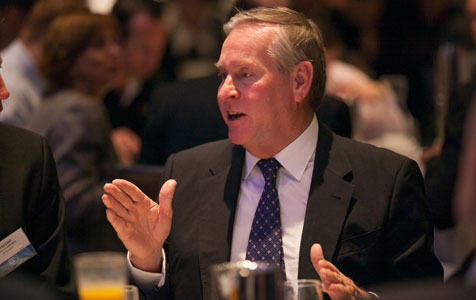The Barnett government is struggling to take the public with it in terms of proposed cuts to spending.


Colin Barnett is facing the biggest challenge of his 24-year political career, with the government he leads having to make some tough decisions in the next few months.
How this is handled could well have significant ramifications, including for the government’s re-election prospects.
Some critics are already writing off the Liberal-National alliance’s chances in the 2017 election. That would be consistent with recent experience, where governments serve two four-year terms and get turfed out; but such judgment is premature.
Mr Barnett’s first big decision relates to metropolitan local government boundaries. There’s general community support for having fewer councils, the contentious issue is where the new boundaries should run.
Despite the strong election endorsement last March, however, some councils are fighting a rearguard action – including in Liberal heartland, the western suburbs, which is Mr Barnett’s backyard.
I’ve witnessed campaigns against local councils in other states, where there have been plenty of references to ‘Taj Mahals’ and excesses have been played up to help justify reforms. But that hasn’t happened here.
The issue represents a can of worms, but the government has to show some resolve and make it happen. Any retreat would mean a loss of credibility.
The loss of the AAA credit rating after the recent Standard and Poor’s assessment was a major blow, as was the comment that the government has lacked resolve in dealing with its spending problems.
Mr Barnett may not like that assessment, but it certainly looks that way.
Wages and salaries represent the biggest cost in running any government. So Mr Barnett and his team not only have a voluntary redundancy program going, they are seeking to cut the workforce in areas such as health and education.
Unfortunately for the government, the problems in these areas are partly of its own making – and there are political overtones.
Mr Barnett himself waved the chequebook in front of teachers during the 2008 election campaign, promising a bigger pay rise than Labor had proposed. Not surprisingly, the teachers liked it, and he was voted in.
A similar thing occurred this year when nurses voiced their concerns over pay during the election campaign. The only problem for the government is the extra millions of dollars become built into succeeding budgets, and must be covered by increased revenue.
Then there are more jobs earmarked for the chop at Sir Charles Gairdner Hospital. This comes on top of the 500 jobs to go in the Education Department. There may good reasons for the planned cuts, but they have not been adequately explained.
When it comes to spending, health in general (and major hospitals in particular) represents a bottomless pit. Senior medical and administrative staff are paid handsomely, the latest technology is extraordinarily expensive, and hospitals are labour intensive. Adding to the health spending woes is the decision to retain Royal Perth Hospital, although the actual functions to be performed there are still unclear.
Unfortunately for the government the powerful health lobby, including the Australian Medical Association, doesn't care who’s in power. Threaten its patch and it reacts.
Mr Barnett and Treasurer Troy Buswell must explain why this harsh medicine is being dispensed. A third term could depend on it.
Odds shortening?
Remember the old saying ‘winning is sure better than losing’? It’s pretty much a truism, except when you become opposition leader just after your party has lost government.
Take the case of Bill Shorten’s narrow victory over Anthony Albanese in the ballots involving Labor’s federal MPs and branch members around the country. Mr Shorten scored 63.9 per cent of the caucus vote, and only 40 per cent support from members, but still won.
However the recent record of new leaders as a party goes into opposition is not good. In fact during the past 30 years none has lasted the distance to actually clinch the big prize when the electoral cycle finally turns.
In 1983 it was Andrew Peacock who succeeded outgoing prime minister Malcolm Fraser as Liberal leader. The party then went to John Howard, back to Mr Peacock, then John Hewson and Alexander Downer, before coming back to Mr Howard, who led it to victory in 1996.
For Labor it was much the same story. After the 1996 defeat it was Kim Beazley, Simon Crean, Mark Latham, Mr Beazley again and then Kevin Rudd, who proved a winner in 2007
After the Howard loss it was the Liberals’ turn to chop and change again. First it was Brendan Nelson, then Malcolm Turnbull followed by Tony Abbott, who stayed the course.
So Mr Shorten faces an uphill battle to lead Labor to victory in 2016. And if things turn sour for Labor mid term, new rules could make it harder for the party to repeat the leadership shuffle of the Howard years.
Should the tide quickly turn against the Abbott government however, Mr Shorten could just buck the 30-year trend.






